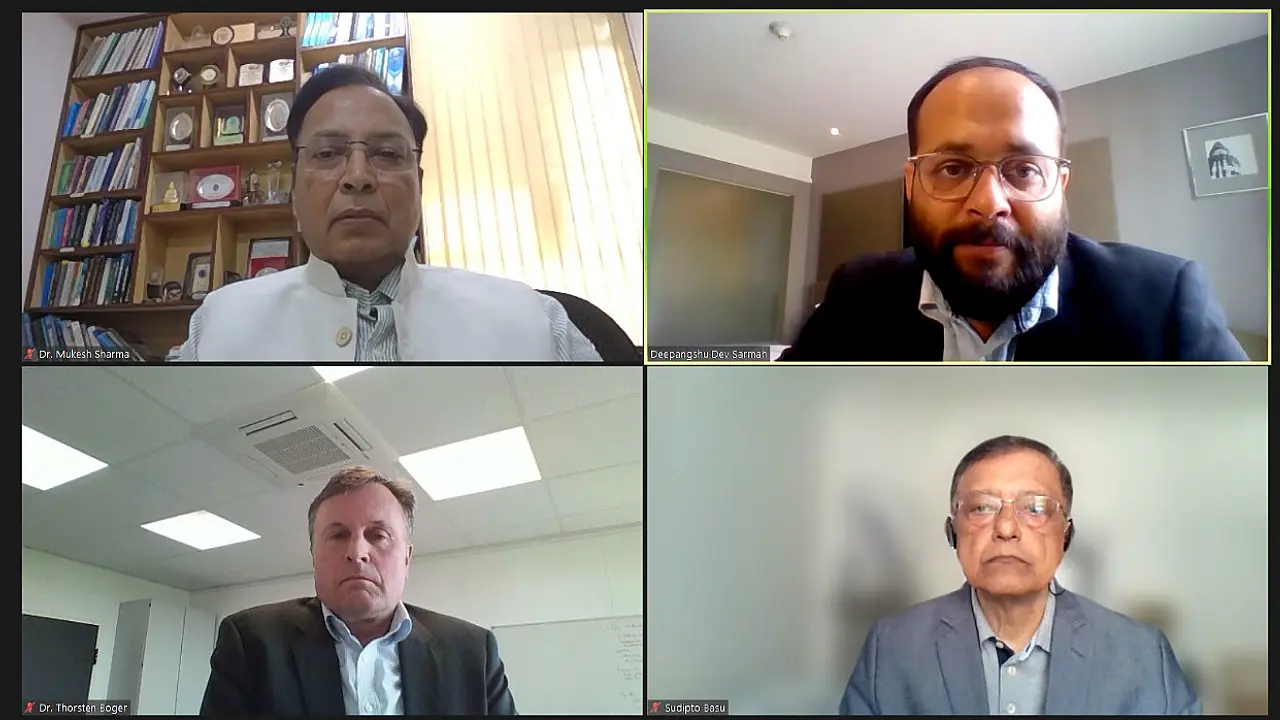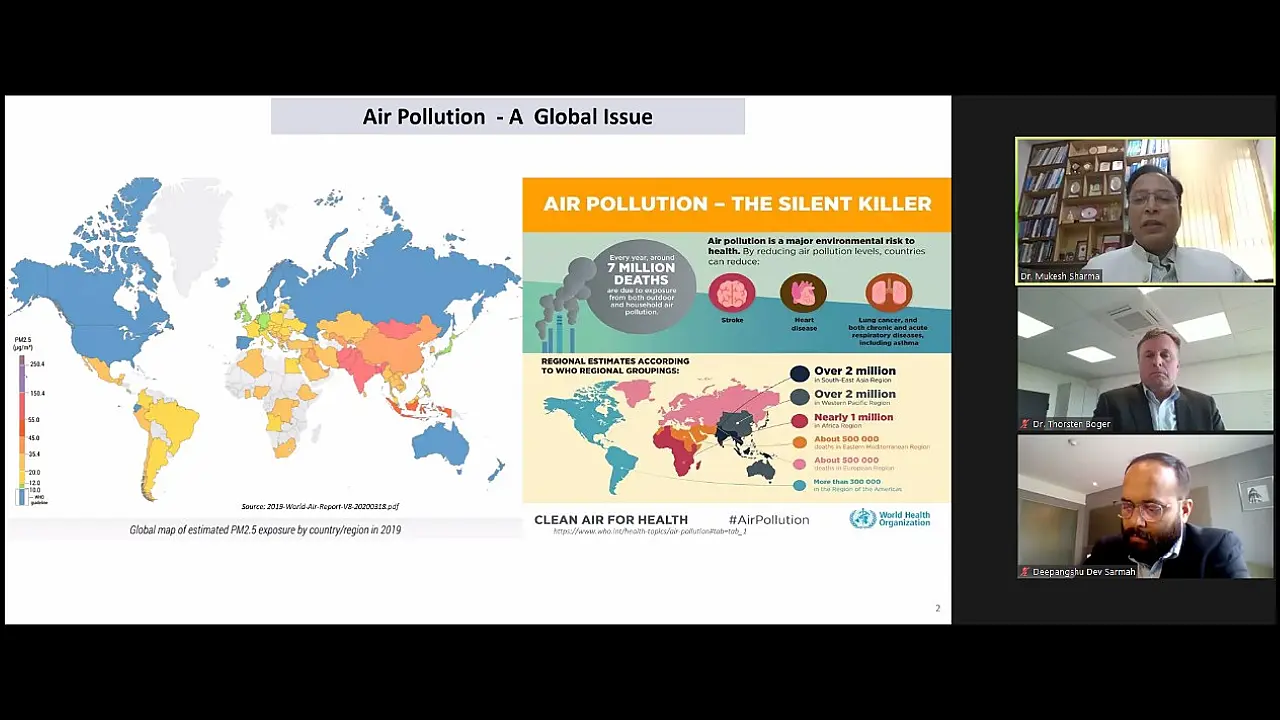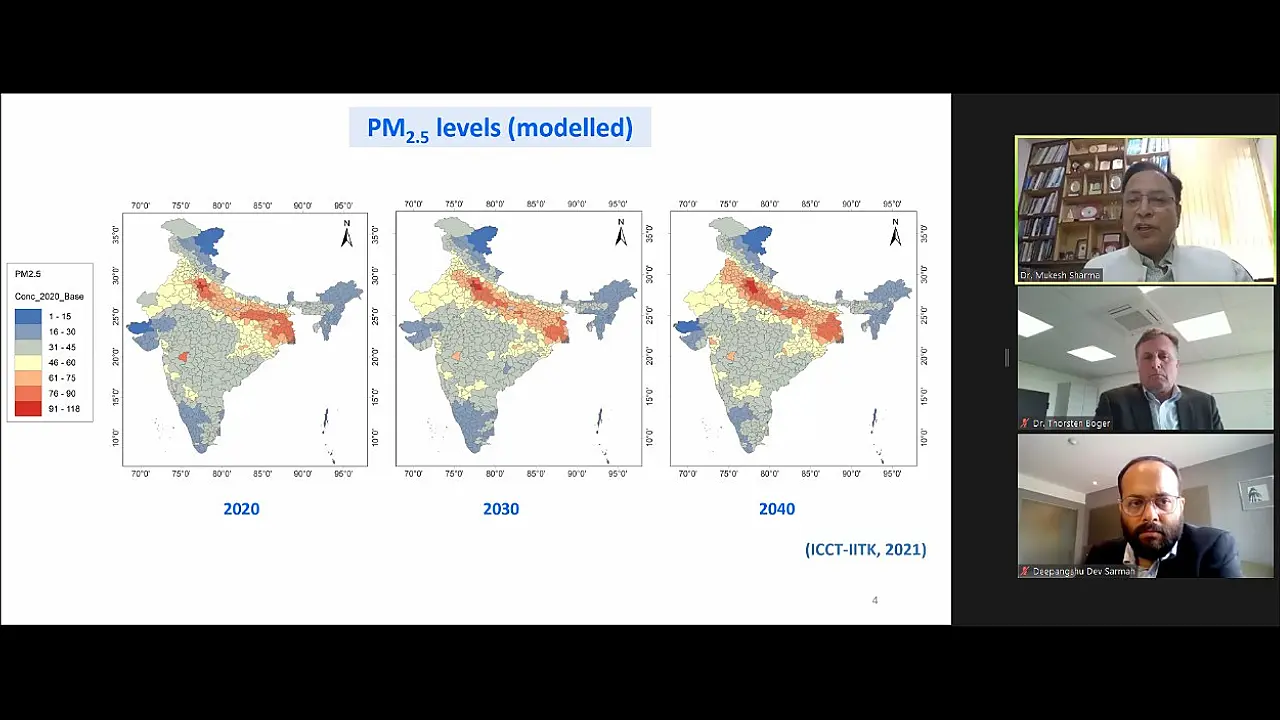
The automobile sector is perhaps one of the best inventions humankind has worked upon. Different mediums of mobility, including passenger cars, trains, aeroplanes, trucks, ships and more, have helped shorten the distance between two points by days and months. The same, however, has also cursed the environment with different types of pollution.
Mobility Outlook, in association with Corning, hosted several talks on Innovation in Clean Air Technologies over the past few months, exploring how the automobile ecosystem can work together to lead the vertical towards zero emissions. The third one in the series Emission, Air Quality and Health: Why You Should Care' was aired live last Friday, which was also the annual Earth Day (April 22). Though we are moving towards electric vehicles, the move might not be enough to enable the world to become a zero-emissions entity.
A report by Corning had previously noted that even if the US moved to 100% BEVs by 2040, the reduction in the particulate tonne would only be about 17%. So vehicles sold now and between 2040, as per Dr Willard Cutler, Technology Director, Environmental Technologies, Corning, will emit emissions for many more decades. The good thing is that there are a host of technologies which can enable a reduction in emissions caused by ICE vehicles.
Addressing the recent webinar, Dr Mukesh Sharma, Fellow, National Academy of Engineering, Member WHO Advisory Group on Air Pollution and UN Sustainable Goals and Professor of Civil Engineering Indian Institute of Technology (IIT) Kanpur, said, 'Pollution caused by vehicles is a serious threat despite the amount being less because the chemical composition of pollution from automobiles is very toxic. If you calculate the mass into toxicity you will find a lifetime incremental risk associated with the pollution caused by vehicles. Even CNG causes pollution.'
What do we need to do?
Almost every country in the world is taking action to curb the pollution caused by different vehicles. However, the need of the hour is to maximise the efforts in these actions to yield the best possible results. Dr Sharma believes that the world needs maximum efforts to ensure that the investments made towards a zero-emission future do not go in vain.
'While the technology has matured at a very fast rate, it has also become necessary to look and examine the vehicles that come on the road. We need to go beyond the driving cycles and keep a check on emissions created by vehicles when they hit the roads,' said Dr Sharma.

He strongly advocated against the vehicles being tested only in labs. It is worth noting that WHO has also come up with new guidelines that define pollution. These new guidelines, which can be read on the official WHO website, present that the pollution problem is not just rampant in the developing countries, but they are also causing havoc in the developed nations. The situation in India is worse. Dr Sharma pointed out that the urgency and desire to clean the air in India are there.
'This is the time where we seriously have to focus on pollution control. If we don't, the pollution levels will expand and by 2040 the problem will be worse. We have to act now. Everybody is serious. We can make things better with the help of the law and certification,' said Sharma.
India presently tests vehicle pollution depending on a certain cycle of operations. The present Indian Driving Cycle System (IDC), as per Dr Sharma, cannot capture the true thing because the speeds at which these tests are conducted are far below than what they are driven in the actual conditions. Modified Indian Driving Cycle fared much better than IDC, as it went close to NEDC (The New European Driving Cycle). There, as Dr Sharma points out, is still scope for improvement.
'What's happening on the road is entirely different from the kinds of tests being carried out in the labs. Our set of tests are not able to capture a lot of things. The question arises if MIDC is good enough? We have to really see how the vehicles do when they are on the road,' said Sharma.
Europe Had The Same Issue
The disparity between the tests being done in labs, tests being done following driving cycles and what vehicles actually emitted on the road was also a problem that Europe faced a while ago. They then considered changing speeds and technology to develop Worldwide Harmonised Light Vehicle Test Procedures (WLTP). Europe, under WLTP, increased the time range, increased the average speed, and also created four different slabs for testing the vehicle.
'WLTP now covers a large range of acceleration and speed. Their laboratory testing is going more towards the realistic side. The comparison between NEDC and WLTP reveals that the latter can help us become a world class leader in curbing emissions, said Dr Sharma. He is of the view that WLTP can fit the Indian conditions much better,' said Dr Sharma.
There can also be a provision of a portable emission measurement system - PEMS added to the tests being done in the country. PEMS measures pollution in real-time while a vehicle is being driven on open roads. The same can be done, keeping in mind the different driving behaviours on urban, suburban, and highway roads. The data generated can help control the emission levels. Also referred to as the Real Driving Emission test (RDE), there are questions around the same as well. The conformity factor should also not exceed the limit that considers a margin for error, which is there because the PEMS equipment does not deliver results for the same tests precisely. A few countries, which have implemented PEMS, are trying to make this system error-proof.
Dr Thorston Boger, Commercial Technology Director, Light Duty Products, Corning Environmental Technologies, said, 'The main focus for Europe now is driving cycles. The introduction of real world driving emissions is a much more important change. Emission assessment is now being done on the road. We are moving towards a pollution free world. It is very important to cover all the ambient temperature. Earlier the testing was done at room temperature but we will now have to consider cold temperatures.'
Dr Boger is of the view that Europe is leading in terms of curbing and fighting the emission caused by vehicles. Corning, as a supplier of after-treatment products, also develops products based on new EU regulations. The EU emission laws are so successful that the likes of India and Pakistan follow the same.

Europe is now following Euro-6 emission norms, and the region does separate tests for pollution emitted at low and high speeds. On the other hand, India does test equivalent to Europe but only from the perspective of the low speed.
'India has made significant strides by skipping BS-V for BS-VI. Looking at the anticipated future from a global perspective, Europe is leading in terms of emission controls. The world, including India, needs to consider temperatures below zero to test emissions. Fuels available at different pumps, as per Dr Boger, should also be brought into the ambit of emission testing. Even Europe had missed the fuel limitation factor in terms of different technologies like direct injection systems. He is hopeful that this will also be done away with when the Euro 7 norms kick in.
The RDE tests are slated to be commenced in India starting April 2023. Before this, the country has seen its biggest jump in BS-IV to BS-VI transition. The leap was significant because the country, keeping the environment into consideration, skipped the BS-V phase completely.
Sudipto Basu, Executive Director, Emissions Control Manufacturers Association, said, 'As we probably know that various forecasting institutions have pointed towards diversification in the energy sources and fossil fuels will continue. What seems to be missing in the Indian context is the presence of hybrids. What I see is that only a small portion of hybrids are present in India.'
Basu further explained that hybrids are growing strongly in countries falling under the Europe region. EVs, as per him, have their own set of problems. Bio-fuels and CNG also require after-treatment. He pointed out that curbing emissions from a hybrid is far easier than others because the vehicles move in a fixed range of motion. 'The higher costs may be the factor that keeps the hybrids from India. I am sure various OEMS are already working on making hybrids accessible for the Indian markets,' said Basu.
The government of India, as per Basu, should work on planning emission curbs on three levels. The work should be divided among national, state and city teams. These three teams should work together to achieve the same goal. 'Some decisions need to be taken at the national level, some at the state level, and some at the city level. These three need to act as one. It is time to take action now. We are still in the learning phase and it will take a long time before we enter the zero emission phase. Everything needs engineering, and we need to give a chance to everything,' concluded Basu.